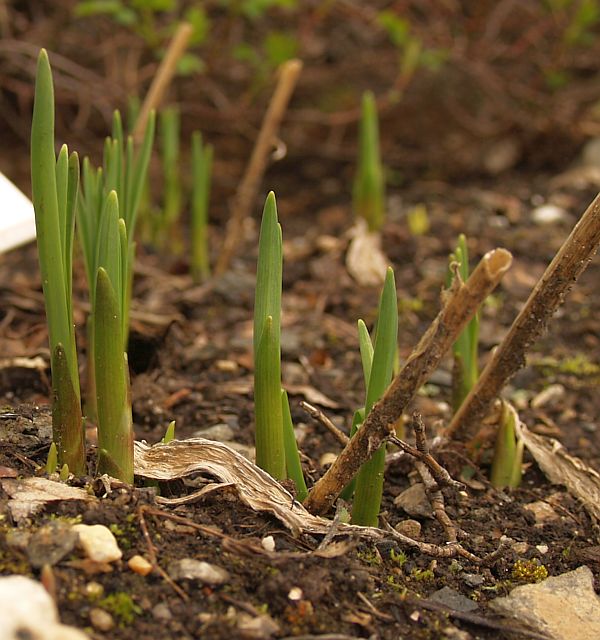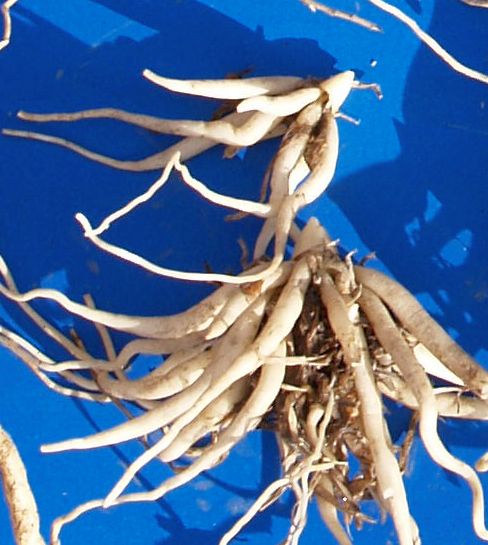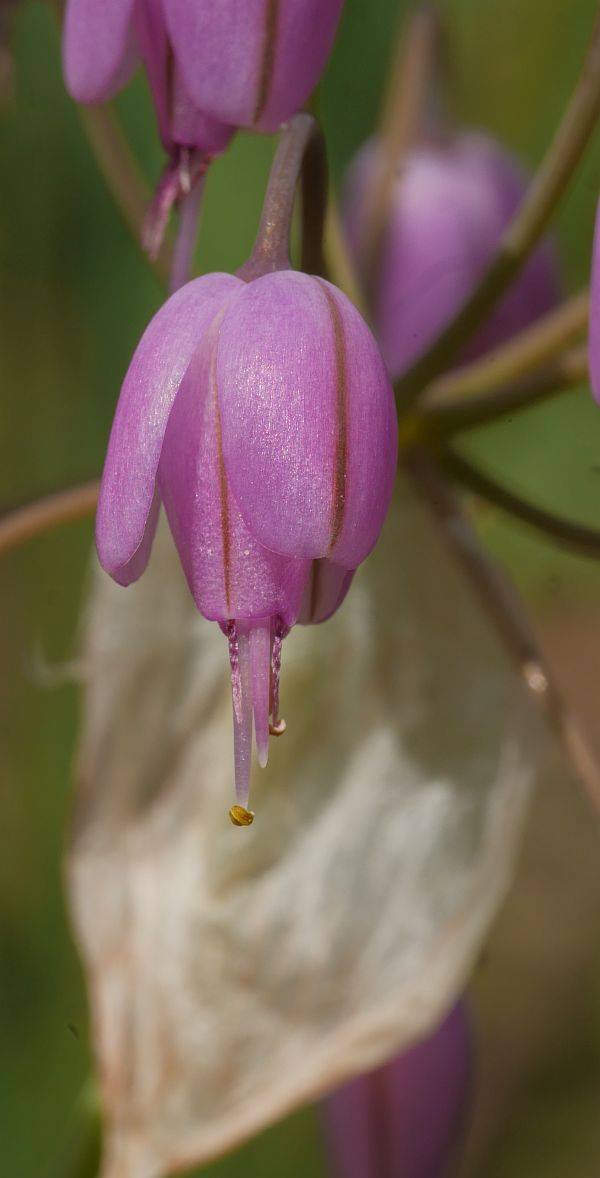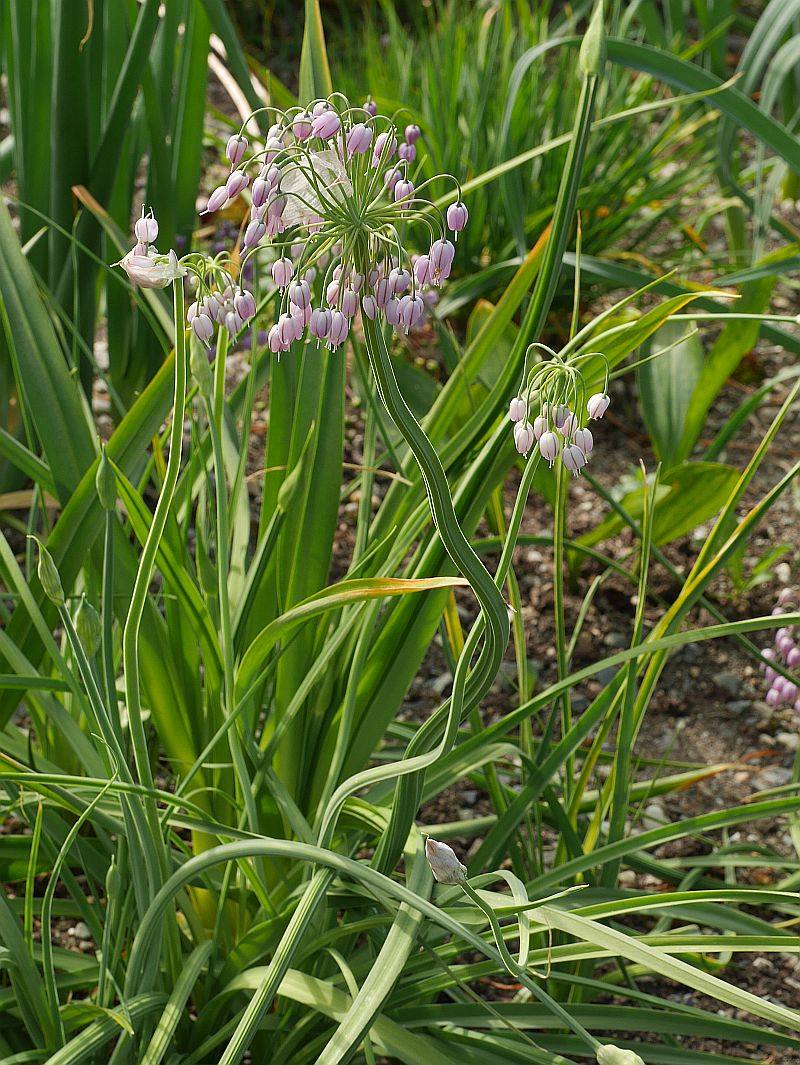Like Sherpa onion or Nepalese onion Allium wallichii, which features in my book Around the World in 80 plants, chiugok (small bird’s garlic) as Allium macrantum is known in Lithang, Tibet is the latest emerging Alliums in my garden. I often wonder if they are still alive when, in a cold spring they haven’t emerged by the end of May, but both species have overwintered now for almost 20 years.


I’m not sure where my oldest plants came from but my second accession came from Vojtec Holubec’s seedlist, collected in Szechuan in China. It’s native to Bhutan, Sikkim, Gansu, Shaanxi, as well as Szechuan and Tibet and grows in wet places at elevations of 2700–4200 metres (Flora of China).


By early July the old roots are withering away and new roots are growing as the flower scape appears:

The flowers are gorgeous hanging on long pedicels. Note that the flower colour varies and the Szechuan accession is pink with green pedicels and has relatively many flowers.
One of my multi-species salads with Allium macranthum flowers in the centre:
Seed heads on 6th September:
Seeds ready to share or trade:
Ethnobotanical records
I searched Google Scholar for evidence of Allium macrantum being used traditionally for food and there were indeed a few ethnobotanical studies recording its use as a food plant. Although not the most popular food Allium in the Himalayas, it is reported to have been one of several species eaten both in Arunachal Pradesh in North East India, the Eastern Hills of India (along with more commonly used Allium wallichii, Allium hookeri and Allium fasciculatum) and used as a spice with meat in South Central Tibet. In Lithang, chiugok “is cleaned and cut into small pieces. It is mixed with butter, tea, roasted barley flour (tsampa), salt, and chilly. Tsampa may not be added. The sauce so obtained is eaten with Tibetan dumplings (mokmok) and fried meat-filled pancakes (shapakle)” (in Traditional knowledge of wild food plants in a few Tibetan communities).
The taste is in my experience relatively strong and therefore best in mixed salads and cooked dishes.
Allium macranthum has also been moved into gardens as an ornamental and has also been used medicinally, including, along with other Allium species, as a cure for altitude sickness!






